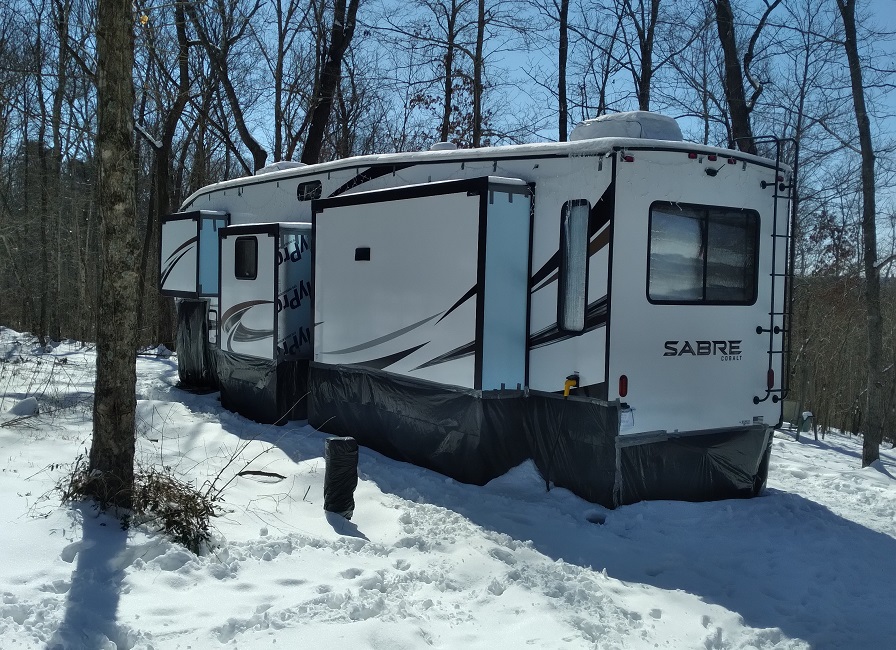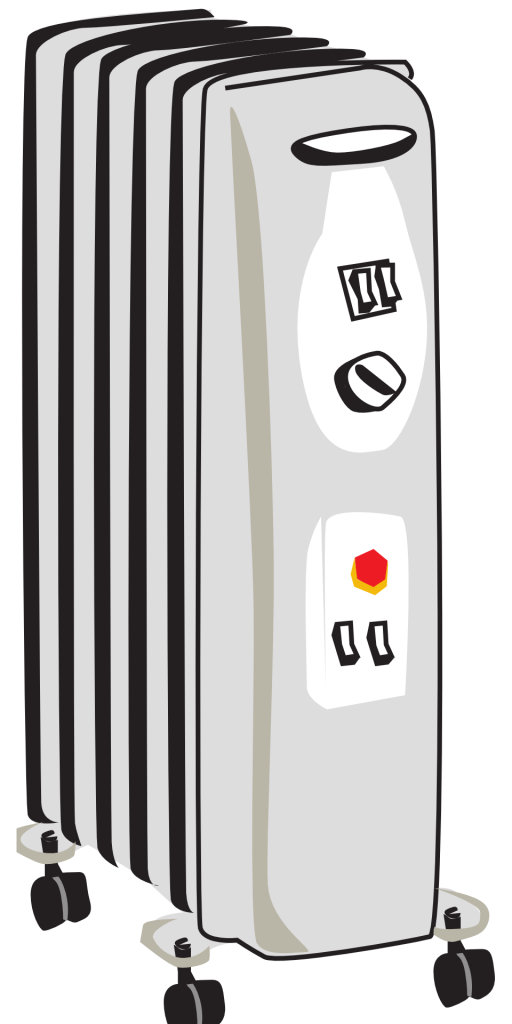Hi, my name is Kate, I’m a full-time RVing mom, wife, and writer. As the frigid weather swept the continent this year, we were hit with some unexpected low temperatures while living in our RV. We live in a Forest River Sabre 36BHQ fifth wheel similar to this Forest River Cherokee Arctic Wolf 298LB fifth wheel from Castle Country RV. Honestly, our fifth wheel did ok in the cold, but it is definitely not as equipped to deal with the -3 degree weather as an Arctic Wolf would be. Below, I’ve put together my five best RV tips for unexpected cold weather.

1. Carry a Quick-Winterization Kit
If you’re planning on traveling in the late fall – early spring camping season, it’s a good idea to make an emergency winterization kit. This kit should include:
- Window insulation packets – Find these on Amazon or at Walmart
- Antifreeze – For your water system
- Reflectix Foil Insulation – This can be difficult to store, but you can use it in your windows, on your floors, under your bed, and even in your cabinets to add insulation on especially cold days.
- Duct Tape – You can use this to secure the temporary insulation in place on your walls, door, and floors.
- RV Skirt – Talk to your RV dealer about which RV skirt is right for your needs. We decided to make our own from a double layer of thick insulation plastic, and it has worked pretty well. However, it’s a pain to put up, and the ready-made skirts are much more convenient in that regard.
2. Lay Out Rugs
Line your floors with rugs, blankets, sleeping bags, and anything else to keep the warmth inside. We found that even with the RV skirt, our floors were extremely chilly in the mornings. The best way to keep your toes from getting too cold is to use slippers and line all the bare flooring with blankets, rugs, and towels.

3. Winterize or Leave the Water On
You have two options on how to deal with your water system during a freeze. You can winterize your entire unit by draining all the tanks and flushing the water from the system. If you do this, you’ll have to disconnect your city water hookup, run all the faucets out, and then pour antifreeze into the pipes to keep them from freezing overnight. I recommend this method if you expect more than a week of below-freezing temperatures. Otherwise, you can set up a heat lamp under the RV, inside the RV skirt to keep the underbelly warm and leave the water dripping overnight in every faucet.
4. Use Heaters
Our RV has a fireplace, which is the primary method of heating that we use. This powerful little fireplace had kept us warm most days and nights when the temperatures were around 40 degrees. However, after the last couple of weeks, we’ve had to set up a pair of oil radiator heaters in our bedroom and our son’s room to keep those spaces warm. I recommend these types of heaters because they are silent and relatively safe to run. We’ve used them for years, even before we moved into the RV. You can find oil radiator heaters on Amazon in a variety of sizes.

5. Get a Heated Water Hose
I cannot stress this one enough. If you are not planning to winterize your RV, get a heated water hose. This hose heats the water from the city hook up to your RV so that when the water enters your system, it is warm, which helps the pipes stay unfrozen, especially if you are letting the water drip
Contact us to find your ideal RV today!
